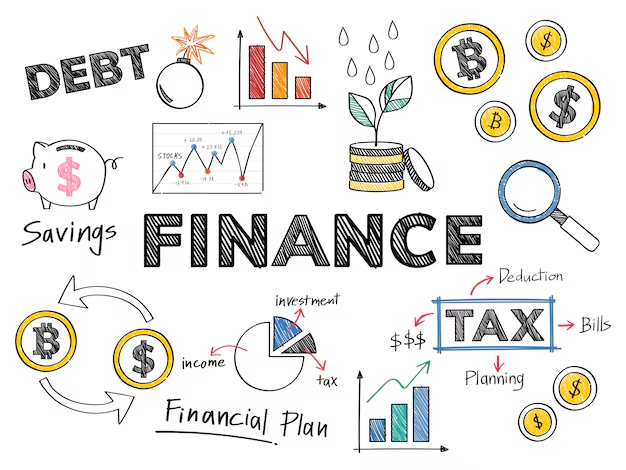The ever-changing financial and electronic world creates the platform for consumers and businesses to present new, intelligent applications for the more effective, more secure management of economic activities and tech assets. The amalgamation of these two sectors could not have left such wonderful opportunities for innovation, optimization, and growth in the long term. This complete guide takes the reader as far into the debate as is necessary to understand the most critical aspects of finance vis-a-vis electronics, e-commerce, financial planning, technology investment, and the future of digital currency.
Understanding the Finance-Electronics Nexus
Electronic financing is a lot more than the bygone credit card and bank loan. The financing available under electronic purchases has become extremely broad and variable, from now buy later or buy now pay later (BNPL) payment models to cryptocurrency payments. As technological prices are expected to soar with innovation and inflation, so does the emergence of financial instruments that liberate high-end electronic devices from the hands of most consumers.
Key Financial Tools for Electronics Buyers
- Installment Financing: As one of the major-widely-known Retailers or Online, offers 0% interest installment plans for electronic appliances, which allows the high-end products without a cash down.
- Credit Card Promotions: Ideal for a promotion through credit card value-added benefits when purchasing electronics, cash-back category, and extended warranty.
- Lease-to-Own Programming: These flexible plans allow a user to use electronic goods at once while paying in monthly installments.
- BNPL platforms: With pay-later services, such as Affirm, Klarna, and Afterpay, one can easily manage cash flow for acquiring those essential gadgets.
Investing in the Electronics Industry
The electronics sector continues to be an engine driving the growth of economies worldwide and, hence, a good ground for retail and institutional investors.
Top Investment Avenues
- Tech-Stock Investment: Such companies are the real players in the market – Apple, Samsung, Nvidia, and Intel. These stocks are powered by the very latest in innovation.
- Mutual Funds and ETFs: Investing in electronics growth involves putting money into technology-focused exchange-traded funds (ETFs) such as XLK or VGT. They would also diversify risk.
- Semiconductor Industry: The essence of modern electronics, semiconductors are in high demand in most areas, such as automotive, healthcare, and consumer devices.
- Green Electronics: Sustainability has been the trend gaining momentum, and green tech companies concerned with recyclable electronics and energy-saving devices have shown profit prospects.
Budgeting for Tech: Smart Financial Planning Tips
Purchasing electronics should never, in fact, create a dent in an individual’s financial well-being. Here is how to make your tech purchases cost-effective.
Create a Tech Budget
Always make space in your monthly budget for gadgets and tech upgrades. Line up budgeting apps like YNAB or Mint for automated savings and real-time checks on your expenditures.
Evaluate Need vs. Want
Essential electronics, such as a laptop, required in the workforce or school settings, should be kept separately from luxury items. Prioritizing function will help extend the budget sensibly beyond the brand.
Look for Seasonal Discounts
The perfect time to buy gadgets in the tech market would be Black Friday, Cyber Monday, and around end-of-year sales when the prices usually tumble. Budgeting, according to them, can save a lot.
Buy Refurbished or Certified Pre-Owned
Refurbished certified gadgets carry warranties and are less than 30-50% of their price of new models. This is a sure wise business for high-cost items like iPhones, MacBooks, and smart TVs.
Digital Payments and Finance in the Electronics Era
The rise of digital finance tools has made purchasing electronics more seamless and secure than ever.
Popular Digital Payment Methods
- UPI & QR Code Payments: Unified Payments Interface (UPI) turned the market upside down in terms of how it uses electronic transactions in India.
- Mobile Wallets: are such as PayPal, Google Pay, and Apple Pay. They are accepted most widely, feature fraud protection, and can conduct transactions on behalf of millions of consumers.
- Cryptocurrency Payments: Some forward-thinking retailers accept Bitcoin and Ethereum, among others; the transactions are decentralized and borderless.
Security Tips for Digital Payments
- Implement two-factor authentication on all your financial accounts.
- Don’t use public Wi-Fi when performing any online transaction.
- Regularly check up on your statements to look out for unauthorized charges.

Financing for Businesses in the Electronics Sector
Specific financial problems exist, especially in retail and manufacturing electronics. Financing, when done effectively, propels innovation, scales operations, and widens profit margins.
Startup Loans and Grants
Specific types of tech startup funds, which include angel investors, venture capital, and the government granting funds for innovation, are made available for entrepreneurs.
Working Capital Loans
It is intolerable to change this statement in such a way that any credit or an allied one is coalesced with part of the sentence.
Equipment Financing
To achieve cash flow management, businesses that need advanced manufacturing tools or testing equipment often resort to equipment leasing or financing for their purchases.
The Role of AI and Big Data in Financial Decisions
Machine Learning, Artificial Intelligence, and Big Data have immense potential when integrated into both finance and electronics to make the right decisions by learning from data patterns.
AI in Personal Finance
Leveraging AI makes recommendations on:
- How to monitor and categorize spending
- How to implement automated saving
- How to project future bills and budget necessities
Big Data in Business Finance
Electronics companies make use of Big Data:
- They predict product demand
- Enhance inventory management
- Identify profitable customer segments
The Rise of Crypto and Blockchain in Electronics Transactions
Blockchain technology is redefining how we purchase, own, and secure electronic assets.
Use Cases in the Electronics Industry
- Transparent Supply Chains: With the help of blockchain technology, companies will track the origins of electronic components and make sure that they are authenticated and sourced ethically.
- Smart Contracts: Warranty claims or service agreements would be automated through smart contracts without any need for intermediaries.
Top Electronics Finance Trends to Watch
- E-Commerce Embedded Financing: Electronics retailers will increasingly embed financing options directly at the point of sale.
- AI-Backed Credit Scoring: Credit eligibility for tech financing using alternative data points evaluated through AI.
- Sustainable Financing: Green loans and environmental scoring will inform electronics financing choices.
- Digital Currency: Mainstream Central Bank Digital Currency (CBDC) adoption may alter the electronic payment scene.
Conclusion
To understand consumer taste patterns, new technologies, and flexible finance instruments, one must try to strike an ever-changing equilibrium between finance and electronics. Whether an individual is planning the timing of their next gadget purchase or an organization is making decisions regarding high-tech infrastructure investments. But whatever the case and whoever the players, a certain degree of financial literacy is required to shoot a straight line to any one of these options.
Also Read: Make1M.com Millionaire Lifestyle: A Simple Guide and Success

